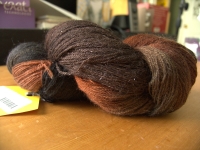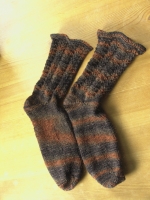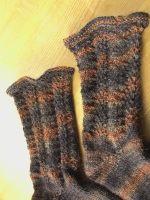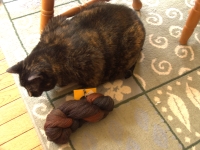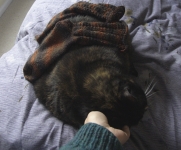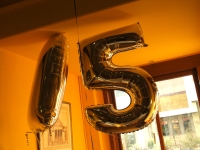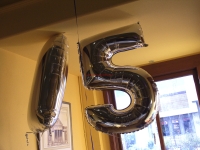Things have been quiet on the blog front of late. That’s partly due to the usual situation of being overrun with too many things, and also largely due to the fact that I spent 6 months wrestling with my digital photos.
For reasons that are increasingly unclear to me, I have been shooting all my Canon PowerShot Pro1 pictures in “RAW” format. The theory is that raw pictures are more readily manipulated in post-production, and that your computer has far more hardware to apply to doing image manipulation than any microprocessor and embedded software in your camera. The problem is that RAW formats are just that — the raw dump from your camera. Apparently, these are highly proprietary formats and there is no particular standardization across cameras (even within a given brand of camera). So, the reality is that not all software handles all camera raw formats equally well.
Now, to be clear — I’m not a Photographer with a capital “P”. I like to have a camera capable of taking decent pictures (with, or more likely, without my help 😉 ), and want the ability to play with them in post-production on the odd occasion. But, being more of a Snapshot kind of person, for most of my photos I would like to be able to dump the images, wave a magic software wand (read: batch process) and have a reasonable set of basic jpegs to show immediately. I was perfectly happy for the first 6 months I was shooting raw. I would dump the raw images into one directory, point GraphicConverter at the directory, do a batch process to produce jpegs from the raw files, and voila! I had raw “originals” and decent jpegs to post here or do whatever.
And then I upgraded my version of GraphicConverter, from version 5.75 to version 5.81. And the jpegs it was producing looked *awful*: the colour balance was way off on any of the indoor shots (everything had a yellow tinge).
Now, I really like GraphicConverter as my photo library management tool. It’s simple, it doesn’t get in your way, and yet it has a lot of useful features you can optionally use. But, I needed a reasonable way to get the picture above to look more like its intended colour balance.
After poking & prodding at GraphicConverter for a while, and finally concluding it wasn’t a bug or a setting that had gotten knocked out of whack during an upgrade, I started looking around for dedicated RAW conversion software that would work on my Mac, cost less than $100, produce decent basic JPEGs easily, and fit in my workflow. PhotoShop clearly could work on my Mac, but it wasn’t clear it could meet any of the other criteria. And it’s a very big hammer for the job.
I wound up looking at Bibble, Raw Developer, and Capture One. (I wanted to play with Google’s Picasa, but it only runs on Windows platforms). I grabbed about 50 of my RAW pictures and tried each of the packages. This was actually something of an interative process — it turns out that it takes time to figure out what the possibilities are in each package, as the user interfaces are all somewhat unique, and I got better with each package as I went along.
Here’s a sample of the output JPEGs.
Bibble
|
Raw Developer
|
CaptureOne
|
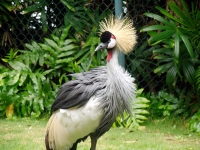
|
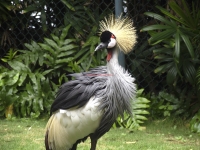
|
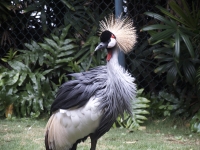
|
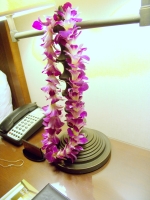
|
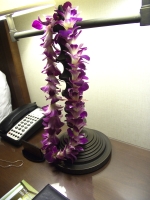
|
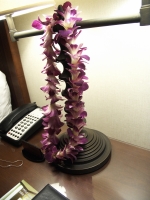
|
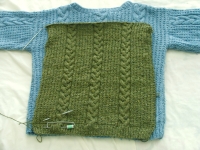
|
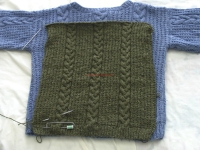
|
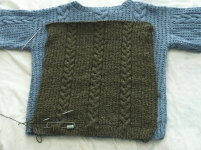
|
From the above, it should be clear that I completely wiped out with Bibble. I found the resulting JPEGs were exceedingly brash, not quite right in terms of colour, and in the picture of the lei you can see bad moire patterns in the light on the wallpaper.
For me, the difference between Raw Developer and Capture One was less obvious. In the end, I leaned towards Raw Developer because I seemed to more naturally achieve results that were credible. The blue in the sweater is closest to real life in the Raw Developer (middle) version in the bottom row, for example. Others (who actually know something about image manipulation 🙂 ) have compared the two packages and found interesting similarities and differences, too — and no hands-down winner.
I’ve now been using Raw Developer for a while, and generally find it is living up to expectations of producing decent renditions from RAW photos, with minimal effort. Of course, there are times one wants to stop and actually play with a photo, to take a reasonable picture and produce something powerful and sublime. I had a look at LightZone, which has a very interesting interface based on playing with layers and masking — as one would with traditional photography. There are further elaborations of the LightZone approach available on the Web. But, I could not quite find that it would replace Raw Developer for me, and I think if I want to play with photos that much, I’ll have to bite the bullet and really learn PhotoShop.
